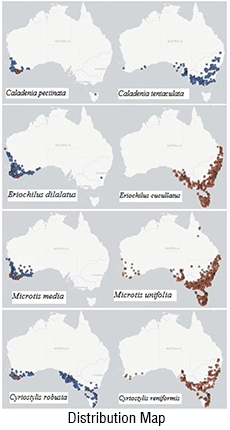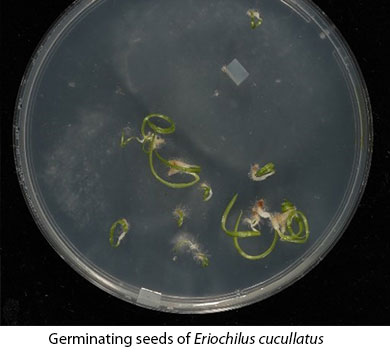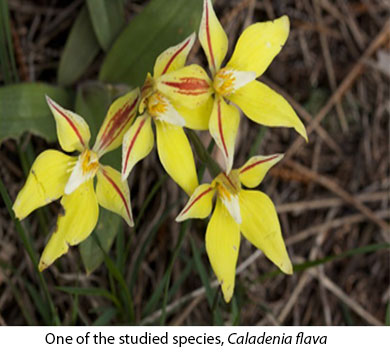<< BACK TO PROJECT LIST
Project: 323/2017
Title: Serendipita diversity in Australia: Biogeography and specificity of Serendipita across the Australian continent
Applicant: Fitria Tisa Okalita
Institution: The Australian National University
This project will investigate biogeographical patterns in Serendipita on a continental scale. We are targeting four Australian orchid genera associate with Serendipita; Caladenia, Eriochilus, Microtis and Cyrtostylis. Although one study has shown some Serendipita lineages have a continent-wide distribution (Davis et al., 2015), most fungi surprisingly appear to be geographically restricted. Geographic restriction could however, be an artefact of sampling. Therefore targeting phylogenetically related orchids (which should associate with similar OMF) as well as species that are widespread (which usually means they associate with a large number of OMF lineages – increasing the possibility of finding similar Serendipita lineages in eastern and western Australia) should elucidate whether an east-western Australia distribution is more common than previously thought. Also, this will maximise our chances of finding OMF that have wide geographic distributions. The investigation of germination ability of studied orchid in utilizing a range of given fungi during germination may facilitate improvement in the knowledge for ex situ conservation to enable informed assessment of the suitability of mycorrhizae for translocation/restoration of endangered orchid species. Therefore, this approach will contribute in retaining biodiversity by conserving endangered orchid species as well as fungal lineages they associate with. Lastly, by providing biogeographical pattern of distribution of Serendipita on a continental scale will contribute to understanding Australian biodiversity in a cryptic and ecologically important group of soil fungi.


This project will investigate biogeographical patterns in Serendipita on a continental scale. We are targeting four Australian orchid genera associate with Serendipita; Caladenia, Eriochilus, Microtis and Cyrtostylis. Although one study has shown some Serendipita lineages have a continent-wide distribution (Davis et al., 2015), most fungi surprisingly appear to be geographically restricted. Geographic restriction could however, be an artefact of sampling. Therefore targeting phylogenetically related orchids (which should associate with similar OMF) as well as species that are widespread (which usually means they associate with a large number of OMF lineages – increasing the possibility of finding similar Serendipita lineages in eastern and western Australia) should elucidate whether an east-western Australia distribution is more common than previously thought. Also, this will maximise our chances of finding OMF that have wide geographic distributions. The investigation of germination ability of studied orchid in utilizing a range of given fungi during germination may facilitate improvement in the knowledge for ex situ conservation to enable informed assessment of the suitability of mycorrhizae for translocation/restoration of endangered orchid species. Therefore, this approach will contribute in retaining biodiversity by conserving endangered orchid species as well as fungal lineages they associate with. Lastly, by providing biogeographical pattern of distribution of Serendipita on a continental scale will contribute to understanding Australian biodiversity in a cryptic and ecologically important group of soil fungi.


